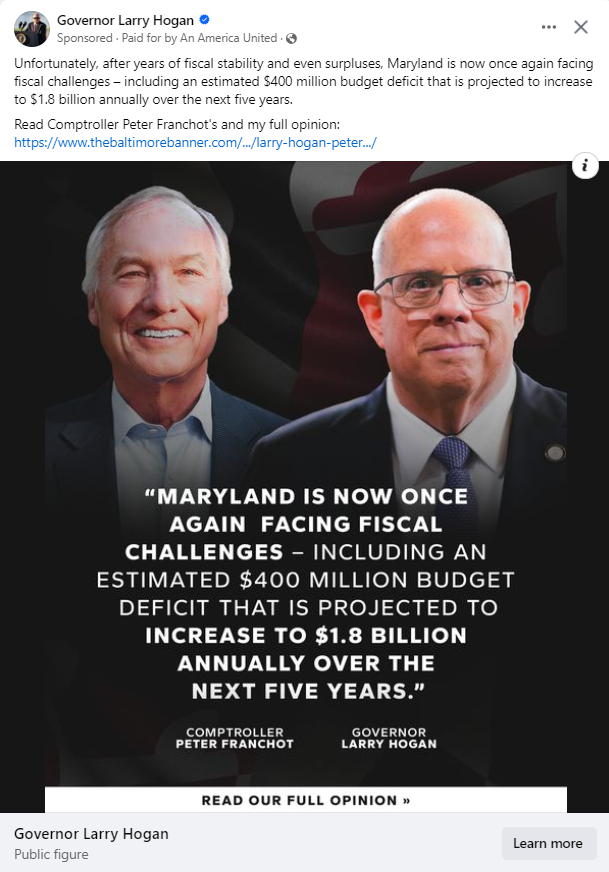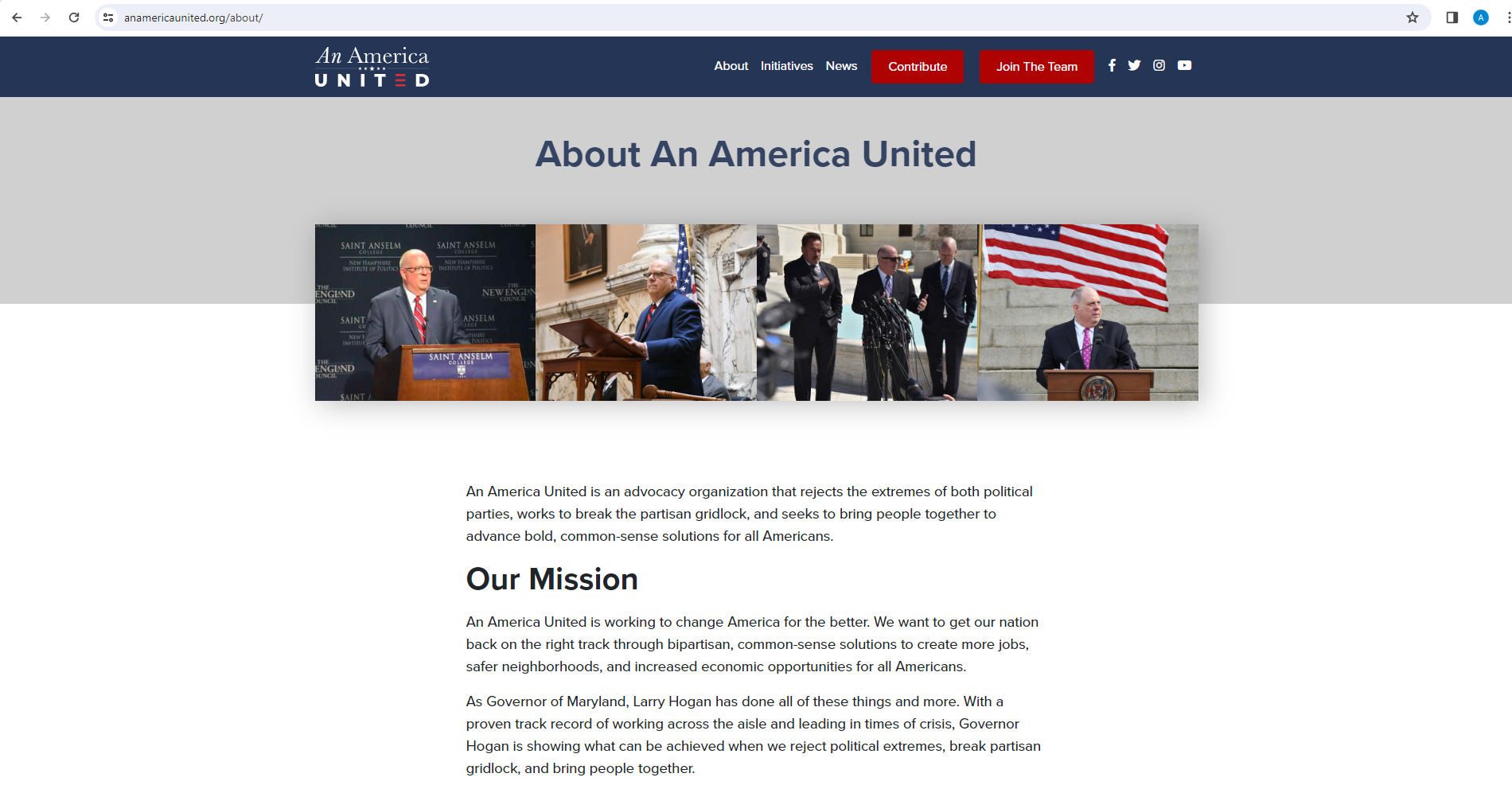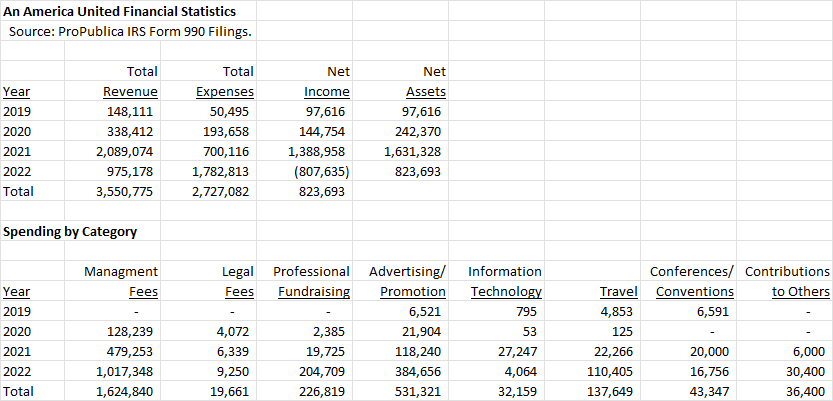By Adam Pagnucco.
There has been a bit of discussion about whether former Governor Larry Hogan will be running for president on the No Labels Party ticket. Regardless of his decision on that issue, no one expects Hogan to be in the Oval Office next year, although he could steal votes from President Joe Biden. But here is a more interesting question prompted by a recent Facebook ad:
Will Hogan instead run for governor again?
Consider the Facebook ad below, which ran on January 24.

The ad linked to this Baltimore Banner column by Hogan and former Comptroller Peter Franchot, who had a famous bromance during their time in office together, criticizing the state’s out-year structural deficits. In one sense, the column makes a legitimate point because the deficit is a major challenge with which Governor Wes Moore and the General Assembly must deal. So is the broken condition of the Transportation Trust Fund, which began to degrade during Hogan’s tenure.
But let’s put this in context: the state often has out-year deficits and, unless there is a recession, it usually muddles through. In fact, the Department of Legislative Services’ 2022 Fiscal Briefing, issued during Hogan’s last year in office, projected a $409 million general fund deficit in FY27 if a package of tax cuts recommended by Hogan were fully phased in.
No one has clean hands on the issue of structural deficits.
Putting aside the jousting of green eye shades, the more interesting issue here is a political one.
The Facebook ad was paid for by An America United, a group apparently devoted to promoting Hogan judging by its website.

An America United… behind Larry Hogan.
An America United is a 501(c)(4) nonprofit, meaning that it is a social welfare organization whose contributions are not tax deductible. According to the U.S. Internal Revenue Service, such organizations “may engage in an unlimited amount of lobbying, provided that the lobbying is related to the organization’s exempt purpose” and “may engage in political campaigns on behalf of or in opposition to candidates for public office provided that such intervention does not constitute the organization’s primary activity.” As I have previously written, 501(c)(4)s are a major source of dark money in American politics because they do not have to disclose their donors to the public.
According to its tax filings with the IRS, An America United is well-financed. The table below shows a summary of its financial statistics since it was established in 2019.

No individual contributors, no key paid employees and no individual vendors are listed. Such is the way of things with C4s. The organization’s mission is “to engage in public policy development, issue advocacy and grassroots organizing around the issues of civility and goodwill in political campaigns and bipartisanship and collaboration in governance.” The board members are former Republican State Senator Marty Madden, Ewing Oil President Howard “Blackie” Bowen, real estate CEO Gary Gill, private equity CEO James Dresher, and Thomas Kelso, former chair of the Maryland Stadium Authority and chair of Hogan’s 2018 reelection campaign.
So Hogan is running Facebook ads again (a favorite activity of his when he was governor), is in the media all the time and is backed by a C4 that has raised millions of dollars. What does all of that mean? Consider this sentence in Article II, Section 1 of the Maryland Constitution.
The executive power of the State shall be vested in a Governor, whose term of office shall commence on the third Wednesday of January next ensuing his election, and continue for four years, and until his successor shall have qualified; and a person who has served two consecutive popular elective terms of office as Governor shall be ineligible to succeed himself as Governor for the term immediately following the second of said two consecutive popular elective terms.
That’s right, Hogan can run for governor again.
The history of term limits in Maryland dates back to the tenure of Governor Albert Richie, a Baltimore Democrat who served four terms from 1920 through 1935 and was defeated in his race for a fifth term. In 1948, voters approved a constitutional amendment limiting governors to two consecutive terms. Since then, while there have been nine two-term governors (including Hogan), none of them has attempted to return after their second term.
Let’s add this up. Hogan is a smart guy and a talented politician who always had sky-high poll ratings when he was governor. He knows he will never be president. And in today’s MAGA-dominated GOP, he won’t be vice-president either. He has no interest in running for Congress. If he did, he would be running for Senator Ben Cardin’s open seat today. He is an executive by temperament and business experience. And he wants to stay in politics but he needs to find a way to do so.
Governor Wes Moore faces no threats from his own party. He will be the Democratic nominee for governor in 2026. Could Moore’s biggest challenge be another run by Larry Hogan for governor?
